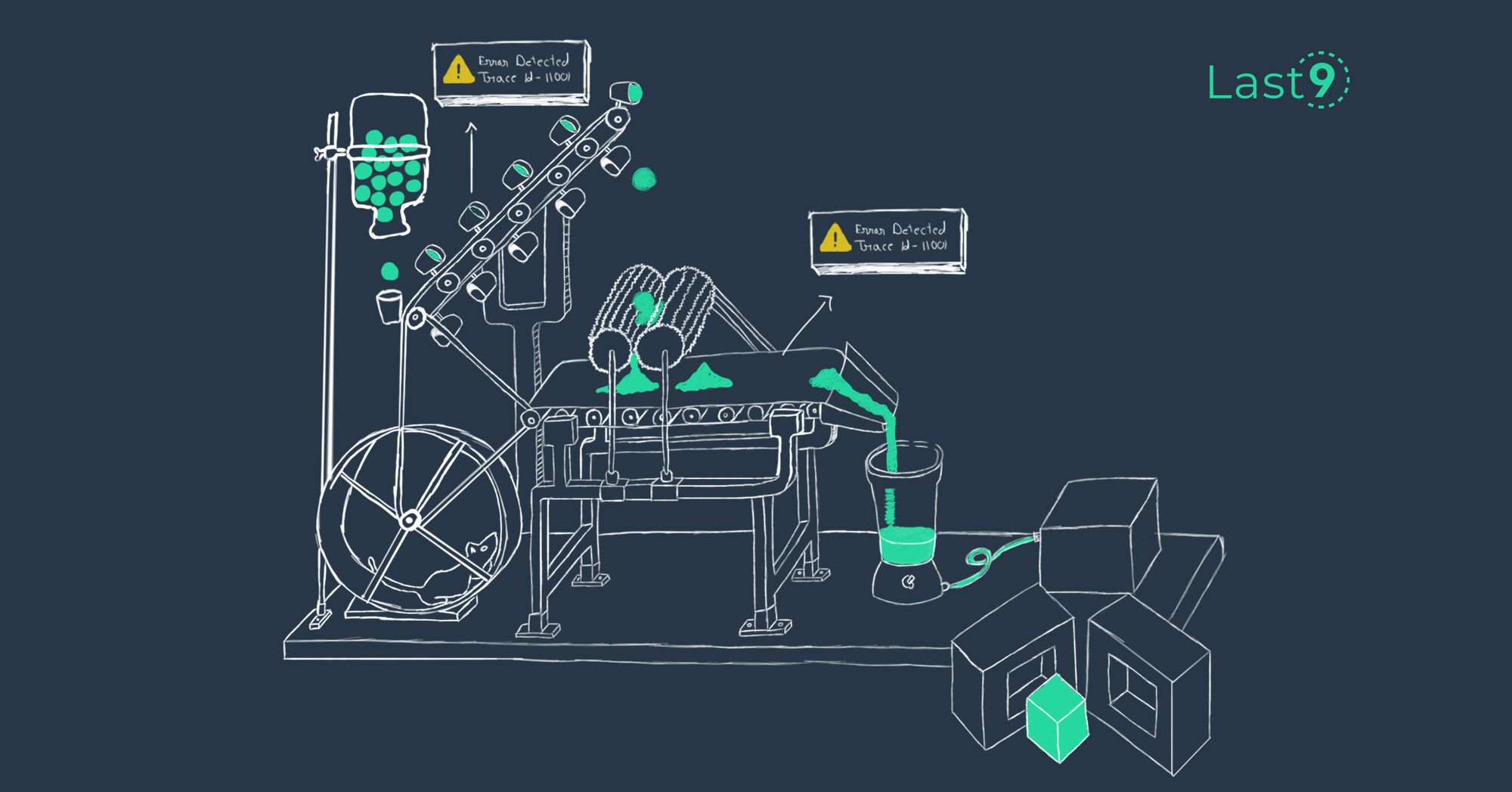Apr 6th, ‘23/6 min read
MTTF vs MTBF vs MTTD vs MTTR
This article covers questions such as what are MTTF, MTBF, MTTD, and MTTR, their differences, how to adopt them, and their use cases.

In this post we will cover
- What do these acronyms mean?
- How do we use them?
- Why are they going to make your system more resilient?
- What to consider while adopting them?
The need for digital resiliency is at an all-time high. According to the 2022 Global Risks Report, presented by the World Economic Forum, global leaders indicated cyber risk as a leading fear in the digital sphere, with 64% of respondents expecting a disruptive event imminently. These disruptions lead to catastrophic events for organizations: missed meetings, late payments, and out-of-date inventory - the possibilities are grim and endless. While organizations, particularly ones that handle large amounts of data, are scrambling to secure their borders, companies and their leaders want nothing more than to focus on creating better customer experiences. Simply put - organizations want less wartime, and more time to focus on their customers.
But less wartime doesn’t come from more alerts. In fact, faster issue resolution is directly correlated with reduced alert fatigue. That’s where resiliency metrics come in. By utilizing strategic observability key performance indicators, engineers can identify the root cause of a system outage faster, decreasing the length of time to remediation. In order to assess these KPIs, let’s start with some definitions:
What is MTTF?
"Mean Time to Failure" (MTTF) is a reliability metric used to estimate the average total time that a product or system will operate before experiencing a failure. MTTF is often used in engineering and product development to evaluate the expected lifespan of a component or system, and it can help inform decisions around maintenance schedules, replacement strategies, and overall design.
How to calculate MTTF?
MTTF is typically calculated by running a series of tests or simulations on the product or system and recording the time until failure for each instance. The MTTF is then calculated as the average of all the recorded failure times.
For instance, if an organization has 4 machines, each of which lasted for 10 months, 4 months, 16 months, and 3 months, the MTTF would be:
(10 + 4 + 16 + 3)/4 = 8.25 months MTTF
Use case of MTTF
Imagine you work for a company that manufactures electronic devices. You want to know how long your product will last before it fails so that you can develop a maintenance strategy that will keep your customers satisfied. You select MTTF as your reliability metric and run a series of tests on your product in which you record the time until failure for each instance. The MTTF is the average of all those recorded failure times.
What is MTBF?
"Mean Time Between Failures" (MTBF) or "Mean Time Between Incidents" (MTBI) is a reliability metric used to estimate the average amount of time that a product or system will operate between two consecutive failures. MTBF is often used in engineering and product development to evaluate the reliability of a component or system and to determine the optimal maintenance schedule.
How to calculate MTBF?
MTBF is calculated by dividing the total operational time of a product or system by the number of failures that occurred during that time. The resulting value represents the average time between two consecutive failures.
Use Case of MTBF
Now that you have an estimate of how long your product will last before it fails, you want to determine the optimal maintenance schedule to keep it running smoothly. With MTBF as a reliability metric, you can estimate the average amount of time that your product will operate between two consecutive failures.
What is MTTD?
"Mean Time to Detection" (MTTD) (also sometimes called MTTA) is used typically in the context of software systems to measure the average amount of time it takes to detect a service health breach or threat. It represents the time elapsed from the initial degradation of a system or network to the moment the team becomes aware of the breach or incident. MTTD is a critical KPI to track because the faster a breach is detected, the faster action can be taken to contain the threat and minimize the damage.
How to calculate MTTD?
MTTD is typically measured in hours or days, and it can be used in combination with other security metrics, such as "Mean Time to Response" (MTTR), to evaluate the overall effectiveness of an organization's security operations.
Use Case of MTTD
You work for a company that provides payment services to customers. You want to make sure that your operations are effective in detecting degradations and minimize downtimes. You use MTTD as a KPI to measure the average amount of time it takes to detect a degradation or incident.
What is MTTR?
"Mean Time to Recovery" (MTTR) is a metric used to measure the average amount of time it takes to repair a failed system and restore it to normal operation. MTTR is often used in engineering and maintenance to evaluate the effectiveness of repair processes and to identify opportunities for improvement.
How to calculate MTTR?
MTTR is typically calculated by dividing the total downtime caused by a failure by the number of repair events. The resulting value represents the average time required to repair the system or component.
MTTR is an important metric to track because it can help organizations identify areas for improvement in their maintenance processes, such as reducing downtime and improving response times. Additionally, MTTR is often used in combination with other reliability metrics, such as "Mean Time Between Failures" (MTBF), to provide a more complete picture of reliability and maintenance requirements.
MTTR is often also referred to as:
- Mean Time to Repair
- Mean Time to Resolve
- Mean Time to Restore
- Mean Time to Respond
Use Case of MTTR
You work for a company that provides an online service to customers. You want to make sure that your service is always up and running so that your customers are satisfied. You decide to use MTTR as a metric to measure the average amount of time it takes to repair a failed system or component and restore it to normal operation.
Working Together
While related, these four metrics - MTBF, MTTR, MTTD, and MTTF - measure different aspects of a system or component's reliability and availability. Yet, together, they can provide a comprehensive view of the performance, diagnostic, and maintenance requirements of the system. Here are a few examples of how they work together:
MTBF vs MTTR
- MTBF and MTTR are often used in tandem to evaluate the reliability of a system. MTBF estimates the expected time between two consecutive failures, while MTTR estimates the time it takes to repair a failed component. By comparing the MTBF and MTTR, engineers can determine whether the repair time is reasonable compared to the expected time between failures.
MTTD vs MTTF
- MTTD and MTTF are often used to evaluate the effectiveness of reliability operations. MTTD estimates the average time it takes to detect a degradation or incident, while MTTF estimates the average time between incidents. By tracking MTTD and MTTF, SRE and DevOps teams can identify areas for improvement in their detection and response processes.
Taken together, these four metrics can provide a more complete picture of a system or component's reliability, availability, and maintainability. Organizations can use these metrics to optimize maintenance schedules, identify opportunities for improvement, determine incident metrics and make data-driven decisions about design and maintenance strategies.
Adoption Challenges
Now that we’ve established what these failure metrics are, let’s discuss tactics for integrating them into a comprehensive incident management strategy and alert system aimed at reducing the total number or period of time of outages and system failures experienced by an organization.
- Align with Business Goals: KPIs are useful only when assessing the primary goal of the organization. For instance, if the system’s main objective is to fail every 3 months as a decoy for hackers, you’d want to utilize MTTF to schedule preventive maintenance in a different way than a system whose job was to continually run without interruption.
- A Data-Driven Approach: Without data, your key decision-makers, like those on your DevOps team, will have a difficult time diagnosing problems and making informed decisions. Align your data collection strategy with your digital resiliency as soon as there’s a plan in place, and see incident response improve.
- Don’t Forget Qual: So often we take a quantitative approach while forgetting a key tool in our arsenal — the qualitative metrics. Users often provide feedback that can be overlooked in a purely quantitative report, and qualitative data gives your engineers insight into the full story of the user experience, allowing your company to provide a premier service level.
- Make a Checklist: With so many different KPIs to track, giving your team a list of items to review allows them to focus on the hard part: getting the piece of equipment back to uptime.
Summary
In conclusion, understanding the key performance indicators for system reliability is crucial for ensuring digital resiliency. By tracking these metrics, organizations can improve their response times, reduce alert fatigue, and create better customer experiences. And most importantly, focus on creating, not just protecting.
Contents
Newsletter
Stay updated on the latest from Last9.
Handcrafted Related Posts

Challenges of Distributed Tracing
What are the challenges, benefits and use cases of distributed tracing?
Last9

If it ain't broke...
A Terraform lifecycle rule in the right place can help prevent a deadlock. But the same lifecycle rule in the wrong place?
Saurabh Hirani

How to restart Kubernetes Pods with kubectl
A query that keeps popping up, so decided to write a simple reckoner on how to restart a Kubernetes pod with kubectl
Last9